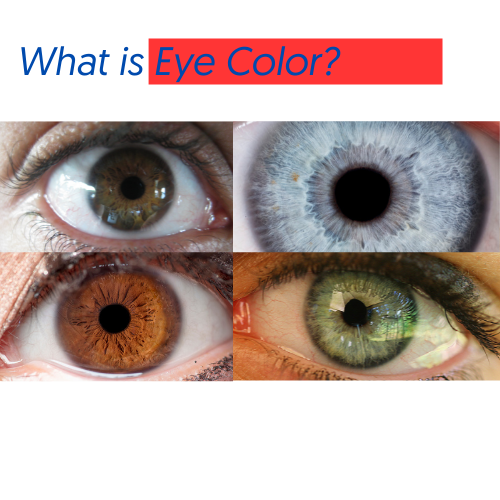What is Eye Color?


Eye color is an inherited trait that is produced from the cumulative effects of many genes. This type of cumulative genetic inheritance is called “polygenic inheritance” and is responsible for such traits as hair color, height, skin color, blood pressure, intelligence,and longevity. What polygenic inheritance simply means is that it is caused by more than one gene.
At least eight genes influence eye color. Those genes control the amount of melanin inside specialized cells of the iris, that donut colored portion of the eye. The pigmentation of the iris varies from black to light brown to none depending on the melanin in the iris or the “pigment epithelium “of the eye, which is located at the back of the iris.
There are two layers of the iris—the epithelium at the back and the stroma in the front. The epithelium is only two cells thick and any dark specks that show up in the eye are showing through from the epithelium. The stroma is made of colorless collagen fibers. In some cases, the stroma contains melanin and sometimes it contains excess collagen deposits. And it is these two factors that control your eye color.
Eye Color is All About Scattered Light
The appearance of blue, green, hazel, and even grey in eyes is the result of something called “Tyndall scattering” or the “Tyndall effect” which is also called structural coloring. The term structural coloring means the color comes from the way the physical structure is scattering incoming light.
Eye Colors
Brown eyes contain a high concentration of melanin in their stomas and this melanin absorbs most of the light entering the eye regardless of any collagen deposits that may be present. That means the incoming light is absorbed rather than being reflected back and the eye color is seen as brown.
Hazel eyes contain a moderate amount of melanin, so they absorb some of the light but also scatter some of it back and that’s the Tyndall effect mentioned earlier. Because there is a moderate amount of melanin these eyes have a light brown hue with occasional sections of green and yellow.
The hazel eye color combinations in shades of green, brown, and gold are endless and solely depend on the concentration of melanin in the iris. Hazel eyes may appear to shift colors, but the color is not actually shifting, the color of the eyes are dependent on the light source in the environment that causes the “perception” of color.
Green eyes only have a small amount of melanin and they have no collagen deposits so that means that only some of the light entering in absorbed by the pigment and the particles in the stroma scatter the incoming light back out into space and the eye takes on a green hue from the way it scatters light. The green color is caused by the amber or light brown pigmentation of the low melanin levels.
Blue eyes have no melanin in the stroma and are colorless until light enters and is then scattered and reflected back into space. This is why the exact color of blue eyes depends on the amount and type of available light.
Grey eyes are extremely rare. They also contain no melanin but do contain an excess of collagen deposits in the stroma and that interferes with the Tyndall scattering and blocks the appearance of blue hues so the eye appears grey.
Unequal Eye Colors
Heterochromia is when each eye is a different color or when eyes have more than one color. A future article will explain this phenomenon in more detail. But if you have heterochromia you most likely have nothing to be concerned about. The condition is usually just a quirk that causes uneven gene expressions for the eyes and only rarely is it a symptom of another condition.
If you would like to make an appointment, call us 609.877.2800 or EMail us.
Gregory Scimeca, M.D.
Ophthalmologist and Medical Director
The Eye Professionals
Our Locations
